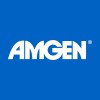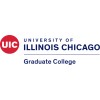
ELobectomy for NSCLC by VATS Versus Thoracotomy (ECTOP-1007)
CarcinomaNon-Small-Cell LungThis study is one of Eastern Cooperative Thoracic Oncology Projects (ECTOP-1007). The goal of this study is to determine video-assisted thoracoscopic surgery is non-inferior to thoracotomy in terms of disease-free survival for solid clinical stage T1N0M0 NSCLC.

Steroids and Pain Control After Tonsillectomy
TonsillitisObstructive Sleep Apnea of ChildThis research study aims to find out if a single oral dose of steroid after tonsillectomy will reduce pain and decrease the need for narcotic medications.

Comparison of Two Techniques of Uniportal VATS Lobectomies for Clinical Stage I Non-Small Cell Lung...
Video Assisted Thoracic Surgery (VATS)Non-Small Cell Lung Cancer (NSCLC)Aim of the study is to compare safety and tolerance of two techniques of Video Assisted Thoracic Surgery (VATS) uniportal lobectomies in the prospective randomized single-institutional trial. One arm is a uniportal lobectomy performed through the transcervical approach with elevation of the sternum, the other arm will utilize a standard uniportal intercostal approache. There will be 10 patients in each group. Patients in clinical stage cI-III (T1-3N0-2M0) Non-Small Cell Lung Cancer (NSCLC). The results will be compared for time of the procedure, number of conversions to multi-portal VATS and/or open thoracotomy, duration and volume of chest drainage, amount of postoperatve pain, time of hospitalization and the number of resected lymph nodes and metastatic nodes. Accrual of patients is planned to complete within 12 months.

Study of Romiplostim for Chemotherapy-induced Thrombocytopenia in Adult Subjects With Non-small...
Chemotherapy-induced ThrombocytopeniaTo evaluate the efficacy of romiplostim for the treatment of CIT in patients receiving chemotherapy for the treatment of NSCLC, ovarian cancer, or breast cancer measured by the ability to administer on-time, full-dose chemotherapy

RejuvenAir® System Trial for COPD With Chronic Bronchitis
Chronic BronchitisChronic Obstructive Pulmonary Disease (COPD) is defined as an impaired ability to move air within the lungs and is a major public health problem that is projected to rank fifth worldwide in terms of disease burden and third in terms of mortality. Chronic bronchitis (CB) is a common clinical phenotype within the umbrella of a COPD diagnosis and is classically defined as chronic cough and sputum production for 3 months a year for 2 consecutive years2, but many studies have used different definitions to define it- chronic cough and sputum production for one year or cough and sputum production on most days of the week. CB is associated with multiple clinical consequences, including; the worsening of lung function decline, increasing risk of acute exacerbations of COPD, increased risk of developing pneumonia, reduced health related quality of life, and an increase in all-cause mortality.

Clinical Study of Combination Therapy With Ectiecinib, Pemetrexed and Platinum in Patients With...
Non-squamous Non-small Cell Lung CancerThis single-arm, open, multicenter clinical study is going to evaluate the efficacy and safety of combination therapy with ectiecinib, pemetrexed and platinum in patients with metastatic non-squamous non-small cell lung cancer with EGFR mutations who did not progress after pemetrexed in combination with platinum-based chemotherapy.

APG-2449 in Patients With Advanced Solid Tumors
Advanced Solid CancerNon Small Cell Lung Cancer3 moreAPG-2449 is a novel, orally active, multi-targeted tyrosine kinase inhibitor, which inhibits FAK, ALK, and ROS1 with nanomolar potencies. In preclinical studies, APG-2449 demonstrated potent antiproliferative activity in various cancer cell lines as a single agent. In combination treatment, APG-2449 enhanced anti-proliferative activities of several chemotherapeutic and targeted agents. It is indicated that APG-2449 may have a broad therapeutic potential for the treatment of human cancer as a single agent and in combination with other classes of anticancer drugs. APG-2449 is intended for the treatment of patients with advanced solid tumors. Upon completion of the Phase 1 dose escalation study to establish the maximum tolerated dose (MTD), dose-limiting toxicities (DLTs), and/or recommended phase 2 dose (RP2D), several phase Ib/II studies will be implemented accordingly.

Reducing Hopelessness Through Improved Physical Activity in Adults With Heart Disease: With COVID-19...
Ischemic Heart DiseaseHopelessness4 moreAfter a 30-year decline, heart disease is projected to increase up to 18% by 2030. Participation rates in cardiac rehabilitation remain extremely low and hopeless individuals are less likely to participate. This innovative study has the potential to advance science, improve patient care, and improve patient outcomes by demonstrating the effectiveness of the Heart Up! program to increase physical activity and reduce hopelessness in patients with heart disease. Hopelessness is associated with a 3.4 times increased risk of mortality or nonfatal myocardial infarction in patients with ischemic heart disease (IHD), independent of depression. Hopelessness has been identified in 27-52% of patients with IHD and can persist for up to 12 months after hospital discharge. Hopelessness, a negative outlook and sense of helplessness toward the future, can be a temporary response to an event (state) or a habitual outlook (trait). Hopelessness is associated with decreased physical functioning and lower physical activity (PA) levels in individuals with IHD. While research has investigated strategies to increase PA among IHD patients in general, the study team is the only group to design an intervention to promote PA specifically in hopeless IHD patients. The purpose of this randomized controlled trial is to establish the effectiveness of our 6-week mHealth intervention (Heart Up!) to promote increased PA in hopeless patients with IHD. A total of 225 hopeless IHD patients will be enrolled from a large community teaching hospital in the Midwest. Patients will be randomized (75 per group) to one of three groups: 1) motivational social support (MSS) from a nurse, 2) MSS from a nurse with additional significant other support (SOS), or 3) attention control (AC). It is hypothesized that 1) The MSS with SOS group will have the greatest increase in average minutes of moderate to vigorous PA per day at 8 and 24 weeks as compared to the MSS only or AC groups; 2) Greater increase in minutes of moderate to vigorous PA per day will be associated with decreased state hopelessness levels from baseline to weeks 8 and 24; and 3) Increased social support and increased motivation will mediate the effects of Heart Up! on a greater increase in moderate to vigorous PA at 8 and 24 weeks. The findings from this study could transform care for IHD patients who are hopeless by promoting self-management of important PA goals that can contribute to better health outcomes.

Management of Progressive Disease in Idiopathic Pulmonary Fibrosis
Progressive Idiopathic Pulmonary FibrosisIdiopathic pulmonary fibrosis (IPF) is a prototype of chronic, progressive, and fibrotic lung disease. It has been considered rare, with an incidence estimated to 11.5 cases per 100 000 individuals per year. Increasing rates of hospital admissions and deaths due to IPF suggest an increasing burden of disease. The median survival time from diagnosis is 2-4 years. Recently two disease-modifying therapies, pirfenidone and nintedanib, have been approved worldwide. Both drugs reduce the disease progression as measured by progressive decline in forced vital capacity (FVC), with a reduction of overall mortality showed by meta-analysis of phase III pirfenidone trials. However, progression of disease continues to occur despite the currently available drug therapy. Many patients die from progressive, chronic hypoxemic respiratory failure, or less frequently from acute exacerbation of pulmonary fibrosis. In these patients, no data are available to guide management between continuation of the prescribed antifibrotic drug, to switch to the other available antifibrotic drug, or to combine the available drugs. The combination of nintedanib and pirfenidone is not recommended outside clinical trials. However, although both antifibrotic drugs were developed and approved as monotherapy, two recent trials have suggested the feasibility and safety of combining them over a 12-24 weeks period. These results encourage further studies of combination treatment with pirfenidone and nintedanib in patients with IPF. Such study is timely, as there is a risk that clinicians facing the continued worsening of disease in patients receiving one of the available drugs may prescribe both drugs combined outside clinical trials, potentially exposing patients to a currently unknown risk. This study will evaluate the efficacy and tolerance of the combination pirfenidone and nintedanib as compared to a "switch monotherapy": i.e. switching from the current to the other of the two existing drugs prescribed as monotherapy, in patients who present chronic worsening IPF despite receiving either pirfenidone or nintedanib and as to a "control group": i.e.treatment still be on as before randomization (pirfenidone or nintedanib).

Reducing Right Ventricular Failure in Pulmonary Arterial Hypertension (RELIEVE-PAH)
Pulmonary Arterial HypertensionThe objectives of the RELIEVE-PAH study are to obtain first-in-human experience with the study device in patients with severe pulmonary arterial hypertension, including evidence of initial safety, device performance and possible signals of clinical effectiveness.
